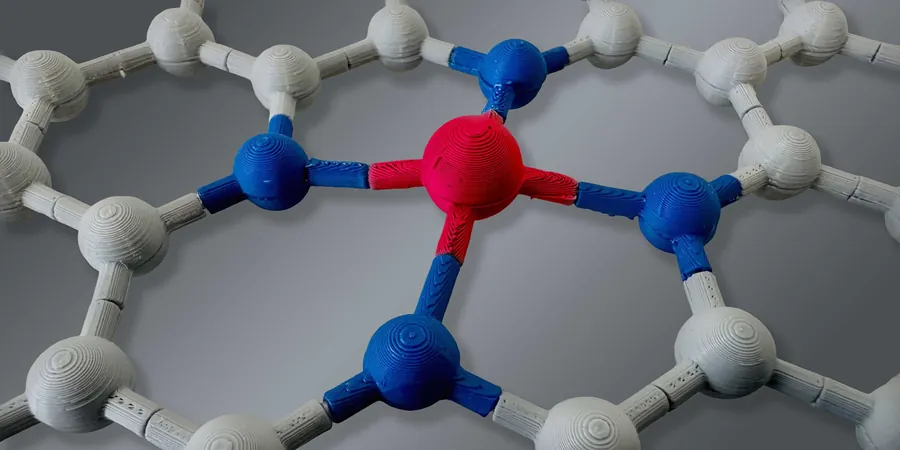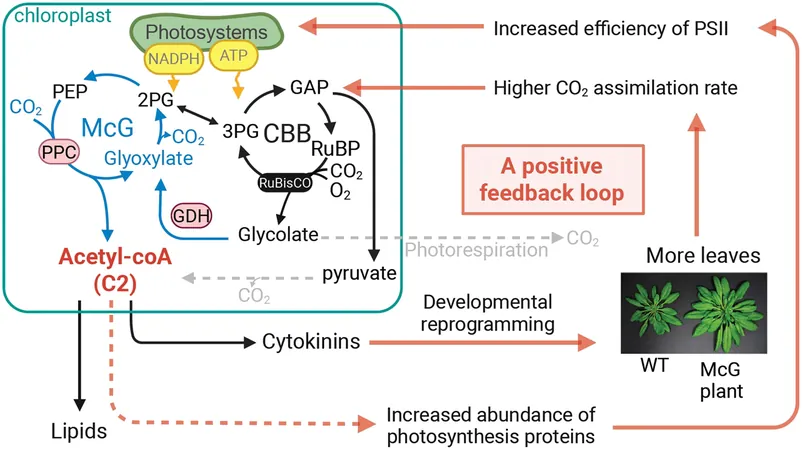
Unlocking the Secrets of Single-Atom Catalysts: A Game-Changer for Efficiency
2025-07-02
Author: Siti
Revolutionary Discovery in Catalysis
Researchers at ETH Zurich have made groundbreaking advances in the study of single-atom catalysts, using nuclear magnetic resonance to explore the atomic landscapes of single platinum atoms. This innovative technique could pave the way for more efficient production methods for these vital catalysts.
Why Catalysis Matters
Catalysis is crucial in our daily lives and industries, facilitating about 80% of chemical production. From car exhaust systems to fuel cells, the role of catalysts is indispensable. Among these, platinum stands out as a powerful but scarce resource, making its optimization essential for sustainability.
The Single-Atom Catalyst Breakthrough
Recent efforts have focused on single-atom catalysts, where each platinum atom plays a direct role in chemical reactions. By embedding individual platinum atoms onto materials like nitrogen-doped carbon, scientists have aimed to enhance efficiency while minimizing usage of this precious metal.
New Insights into Atomic Environments
Led by researchers Javier Pérez-Ramírez and Christophe Copéret, the team revealed that the atomic environments surrounding these platinum atoms are more complex than previously thought. Their findings shed light on how these variations can significantly impact catalytic performance, a major advancement for future materials development.
A Serendipitous Collaboration
The team’s journey began unexpectedly at a meeting within the NCCR Catalysis program, leading to a novel application of nuclear magnetic resonance, which is conventionally associated with medical imaging. This method allows for precise observation of the spins of atomic nuclei in a magnetic field, revealing intricate details about their atomic neighbors.
The Science Behind the Sounds
Just as an orchestra produces different tones, the unique atomic surroundings influence the resonant frequencies of platinum. By collaborating with a simulation expert met fortuitously in Lyon, the researchers developed a code to distinguish these frequencies, leading to a detailed mapping of atomic environments.
Setting New Standards in Catalyst Design
This breakthrough methodology establishes a new benchmark in the field of catalysis. The identified maps allow scientists to optimize production processes for single-atom catalysts, ensuring that each platinum atom functions in an ideal setting.
Implications for the Future
Beyond practical applications, this work holds significant implications for intellectual property rights. Accurately characterizing catalysts at the atomic level enables potential patent protections, ensuring that these innovations can be commercially viable. The ETH Zurich team is now faced with the challenge of implementing these findings into practical applications.





 Brasil (PT)
Brasil (PT)
 Canada (EN)
Canada (EN)
 Chile (ES)
Chile (ES)
 Česko (CS)
Česko (CS)
 대한민국 (KO)
대한민국 (KO)
 España (ES)
España (ES)
 France (FR)
France (FR)
 Hong Kong (EN)
Hong Kong (EN)
 Italia (IT)
Italia (IT)
 日本 (JA)
日本 (JA)
 Magyarország (HU)
Magyarország (HU)
 Norge (NO)
Norge (NO)
 Polska (PL)
Polska (PL)
 Schweiz (DE)
Schweiz (DE)
 Singapore (EN)
Singapore (EN)
 Sverige (SV)
Sverige (SV)
 Suomi (FI)
Suomi (FI)
 Türkiye (TR)
Türkiye (TR)
 الإمارات العربية المتحدة (AR)
الإمارات العربية المتحدة (AR)